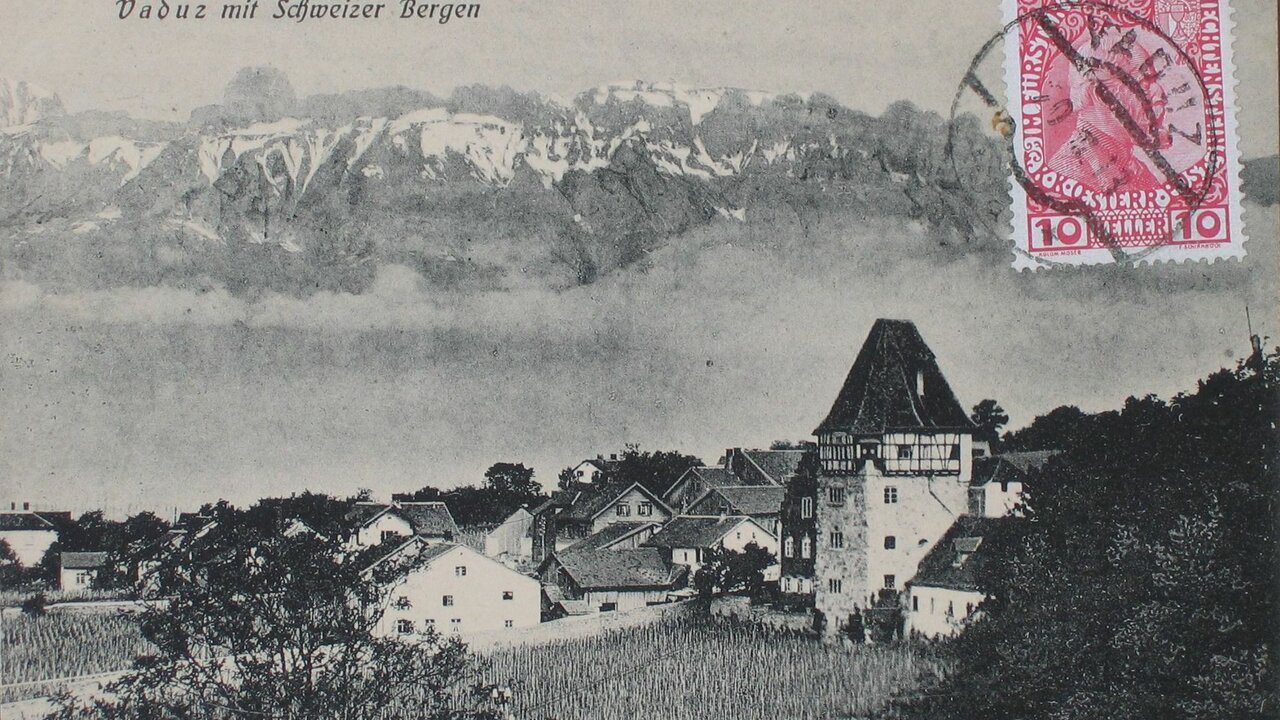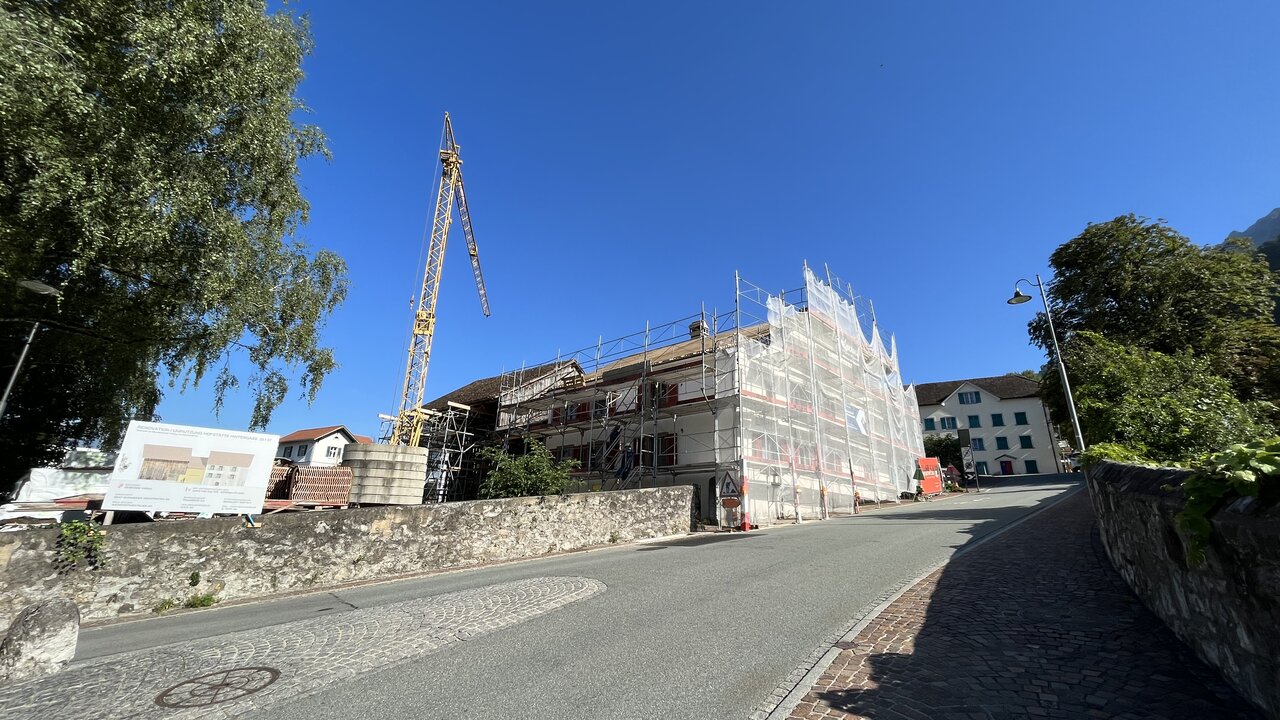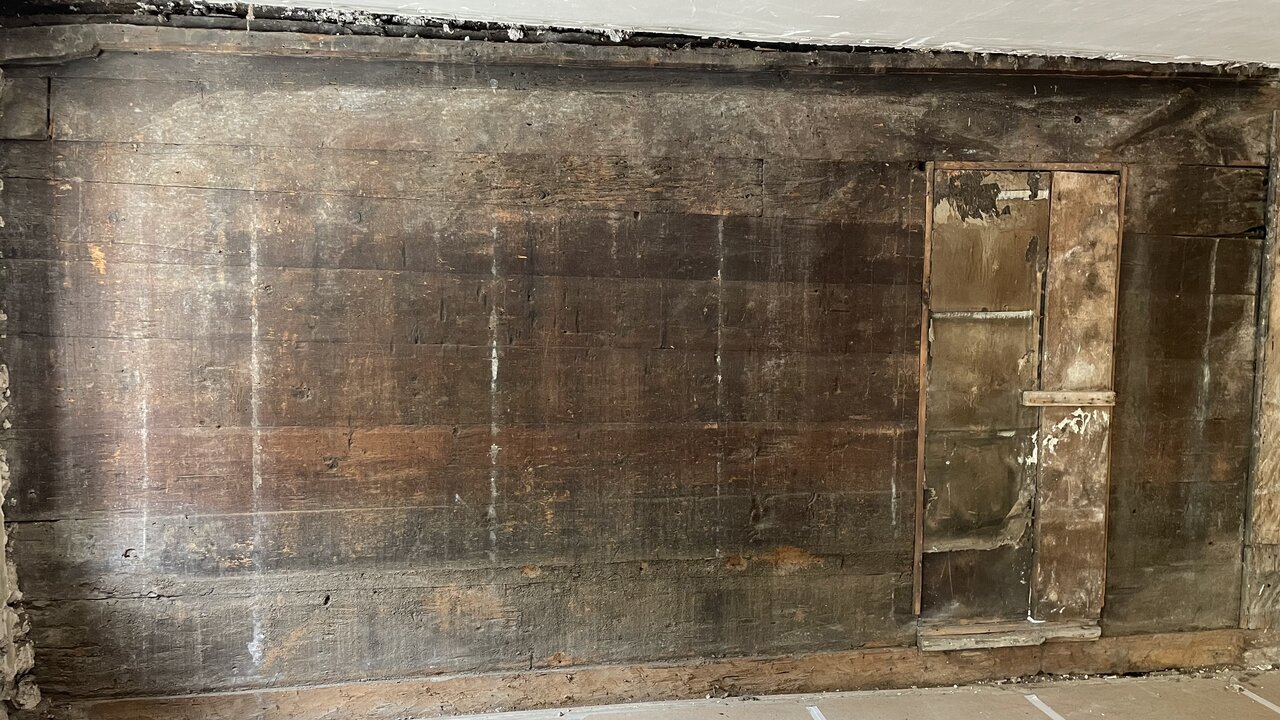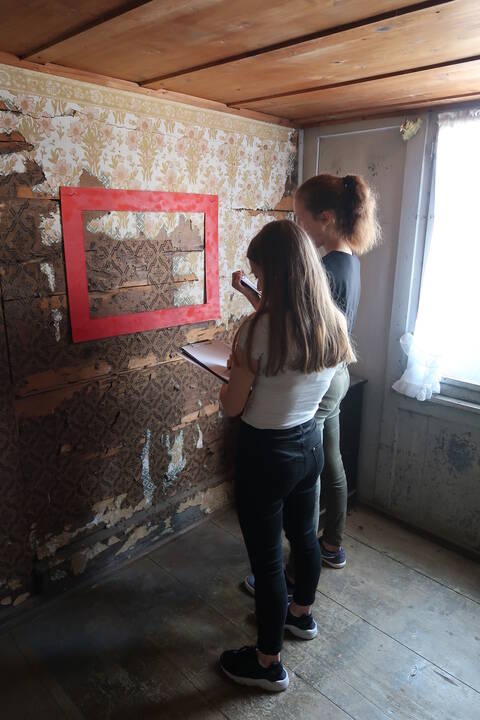Treasure chest
The treasure chest contains information on other topics relating to the preservation of historical monuments, the protection of monuments and cultural assets, and the
Farmstead Hintergass 35-37 in Vaduz
The building ensemble consists of the two residential buildings no. 35 (street side) and no. 37, the large stable barns and the small pigsties and has been a listed building since 1993. The ensemble is probably one of the oldest and most important buildings in Vaduz. The core building, originally built as a winegrower's house, dates back to 1494, while further construction phases from 1697, 1854 and 1890 characterize the current appearance of the ensemble.
Extensive renovation and repair work is currently underway on the historically valuable listed building. Once the work has been completed, the buildings will be available to the public for vacations in the listed building and as a venue for events organized by the municipality of Vaduz.
Building culture in the Triesenberg Madleni Hus researched
The school project "Discovering Building Culture: Madleni Hus Triesenberg" by the Office of Cultural Affairs introduced young people to the topic of building culture and gave them an understanding of how to preserve historic buildings. As part of the European Year of Cultural Heritage, the Department of Monument Preservation in the Office of Cultural Affairs organized two workshops for young people on dealing with old building fabric for the first time. A 3rd grade class from the Realschule in Triesen and a 3rd grade class from the Primarschule in Vaduz each spent half a day dealing with the cultural property that is so important to the history of Triesenberg. How is the old wooden house constructed, how was the tiled stove used for heating or how many wallpapers can be found on the wall of the adjoining room? These were just a few of the tasks that the students of the two classes had to solve and explore in the time-honored house. Equipped with a drawing board and measuring tape, the young people set off in search of the building's special features and came across new findings time and again. Compared to their own living situation, the students thus gained exciting insights into the history as well as the qualities and potential of a historic house. They also visibly enjoyed assembling the wooden model in knitted construction, which showed on a scale of 1:7 the construction of the house built in 1803.
Communicating values: The goal of the "Discover Building Culture" project was to raise awareness among children and young people about building culture. The awareness of their own origins and identity should thus be strengthened, because cultural heritage is identity. Here, the Madleni Hus, with its over 200-year-old building fabric, lent itself to the young generation's learning and comprehension. Since the best way to convey these values is by means of a practical example, and since the municipality of Triesenberg kindly made the house available to the organizers, the ambitious goal was ultimately achieved in full. "Discover Building Culture" was carried out in cooperation with the University of Liechtenstein, which has been successfully involved in teaching architecture in schools for several years. A continuation of the project idea with further classes would therefore be desirable from the organizers' point of view.





